| Umělec magazine 2006/2 >> What a Beautiful City! | List of all editions. | ||||||||||||
|
|||||||||||||
What a Beautiful City!Umělec magazine 2006/201.02.2006 Beate Engel | u-sobě | en cs |
|||||||||||||
|
Berne has only about 125,000 inhabitants and, with its registered old town, appears at first sight to be quiet, clean, picturesque, and somewhat provincial. At the same time, Berne is the federal capital of Switzerland and thus represents one of the richest countries in the world. This affluence is reflected in the enormous amount of cultural institutions. Very recently, the art scene has been experiencing an real upswing. Just a year ago, for example, the new Klee Museum was opened and an additional section of the Kunstmuseum for contemporary art is in the planning stages. In addition to the big commercial houses, alternative venues present current art production to the public in a more direct way. Two years ago, across from the Kunstmuseum in an unused school building, the PROGR_Zentrum für Kulturproduktion (Center for Cultural Production) came about as a alternative use project, a vital combination of a studio building and project workshop.
The program is closely connected to the Stadtgalerie and has expanded the cultural milieu in a very special way. Since 2003, the Stadtgalerie has moved into the "STAGE" pavilion, a mobile pavilion made of wood and glass that is situated in one of the most exciting locations in the center of Berne. It’s here that many different reference points intersect that all call Berne home. Located at an intersection between the alternative cultural center indoor riding arena, the new Bischoff and Partners gallery and the Kunstmuseum, and in direct proximity to a drug-user crisis center and the courthouse, the "STAGE" pavilion functions as an open city stage. From one side, one can look through a wooded area down to the idyllic Aare river, while through the glass windows on the other side, one can watch passing cars and pedestrians moving about on the main arteries of Berne. The Stadtgalerie lends new accents to the great historical architecture of the city center while reflecting the transitory character of contemporary art which is increasing its presence both within and outside the walls of the institutions of the city. It’s not just the interior space, but the entire building and its surroundings that play a vital role in the sense of a "city workshop.” So who does this city belong to, anyway? Who and where is actually the public and what does it have to do with art? Not only Swiss artists are taking up this question again and again, for example, with installations on the roof and on the outside walls of the STAGE pavilion, with video and light projections that shine through the glass windows to the outside. The young Prague artist Tomáš Svoboda, who was invited to Berne under the auspices of a city-sponsored studio exchange program, spent time during his stay over several months in the unsightly and unseen spots in the city mosaic and attempted to provoke anonymous but simultaneously intimate exchanges with city residents. On his excursions through Berne, he studied both the visible and hidden vocabulary of the city and contributed his own texts to the picture. Post-it notes with personal messages were distributed throughout the city and stuck to street light posts, poster surfaces and walls with messages such as "I miss you already” and "Bread is in the fridge!” On the central squares he set up fluorescent orange "City Last Aid" boxes in which various useful items were made available for free, such as a cigarette, a rubber band, a notebook, a safety pin, a small city map or a 20 Rappen coin. The artist used this quasi-sociological investigation to observe the reactions of passers-by at various locations, from the university grounds to the aforementioned crisis center, and presented the results in the Stadtgalerie. In the meantime Svoboda also managed to connect with the "Mango Gruppe," whose unsanctioned stickers he always seemed to notice during his criss-crossing of Berne while working on his own project. Quite spontaneously, a documentary film was shot about the phenomenon and how young people adopt the city as their own in their own way. In addition to this, the artist got to the bottom of some of the seemingly greatest annoyances of the citizens of Berne—that of illegal trash dumping. A little piece of the city—a section of a tram stop at the train station—became, before the city cleaning crew could do anything about it, a true-to-scale snapshot of Berne city life, and was presented in the exhibition space. The collected trash of those waiting for the tram consisting of cigarette butts, Coca-Cola cans and candy bar wrappers became quasi archeological finds. With this multi-piece project called City Tunes, Tomáš Svoboda created his own social cartography asking the questions: How private can a city be? What do its citizens require? What are the limits between free expression of opinion in public space and vandalism? How "beautiful" can a city be? Within the framework of his "Beautiful City" complex, Bernhard Huwiler is presently exhibiting an enormous red flag on the Stage pavilion that is accentuated by a yellow and blue line. The Berne based artist comments, "Beautiful City is actually no city, no geographical location. Beautiful City is a conglomerate, an open space for thought, a space for experience.” Huwiler’s pieces in urban space mostly consist of performative drawings or sketches; yet these aren’t executed with brushes but rather with a city cleaning machine. The flag at the Stage pavilion is situated like a picture or a curtain in front of the glass windows so that a direct physical relationship is created. The city view from the inside looking outward through the glass pane appears to be shaded a reddish color. Red itself is a signal color and stands for danger and the forbidden but also for seduction and revolution. And of course the Swiss flag is also red. Flags and banners are present at many locations throughout the capital, yet in this case, one is confronted with an artistic manifestation. The flag quotes the Barnett Newman picture series Who’s Afraid of Red, Yellow and Blue. Above, printed in the corner of the flag are the words "Beautiful City," a slogan, that’s a reference to the "City Beautiful" movement that came to prominence between 1890 and 1900 in the USA as a reaction against the increasing crime and neglect in city centers of the day. Morality and social control were to be restored through an emphasis on aesthetics; increased cleanliness, bans on graffiti, planting of trees and plants, etc., and the same ideas are also used today and are intended to contribute to making cities attractive and help positively affect inhabitants’ and pedestrians’ behavior. Here in Berne, too, there’s a cleanliness campaign called "Wish me" along with accompanying recurring political efforts to promote ever-more measures to preserve order. This flag, however, is no billboard for a nicely kept city park, but rather marks one of the craziest off color places in Berne where social control and chaos directly collide. The works of Svoboda and Bernhard Huwiler are focused on temporary change and a heightened consciousness inspired by art. They are eliciting questions that are very necessary in this place and in this city.
01.02.2006
Recommended articles
|
|||||||||||||
|
04.02.2020 10:17
Letošní 50. ročník Art Basel přilákal celkem 93 000 návštěvníků a sběratelů z 80 zemí světa. 290 prémiových galerií představilo umělecká díla od počátku 20. století až po současnost. Hlavní sektor přehlídky, tradičně v prvním patře výstavního prostoru, představil 232 předních galerií z celého světa nabízející umění nejvyšší kvality. Veletrh ukázal vzestupný trend prodeje prostřednictvím galerií jak soukromým sbírkám, tak i institucím. Kromě hlavního veletrhu stály za návštěvu i ty přidružené: Volta, Liste a Photo Basel, k tomu doprovodné programy a výstavy v místních institucích, které kvalitou daleko přesahují hranice města tj. Kunsthalle Basel, Kunstmuseum, Tinguely muzeum nebo Fondation Beyeler.
|







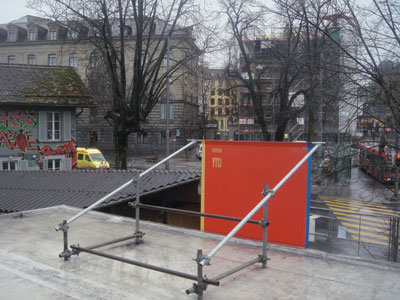



















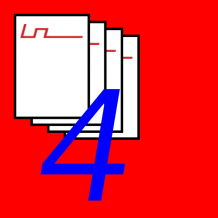
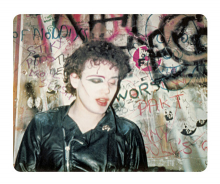
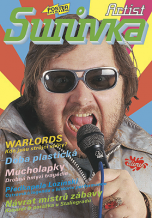
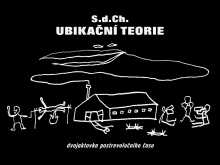


 New book by I.M.Jirous in English at our online bookshop.
New book by I.M.Jirous in English at our online bookshop.
Comments
There are currently no comments.Add new comment